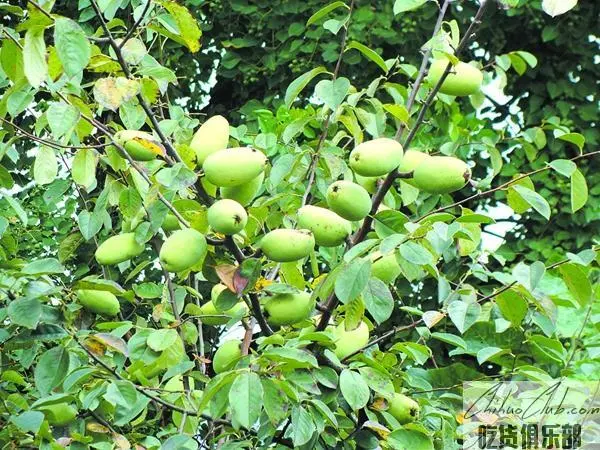
Yunyang papaya
-
Update date::
-
Date of protection::
-
Protected range:The protection scope of Puyang papaya GI products is the administrative area under the jurisdiction of Jixian County, Hubei Province.
-
Related origin:hubei shiyanshi yunxian shiyanshi-anyangzhen shiyanshi-bailangzhen shiyanshi-baisangguanzhen shiyanshi-baoxiazhen shiyanshi-canglangshanlinchang shiyanshi-chadianzhen shiyanshi-chengguanzhen shiyanshi-daliuxiang shiyanshi-hujiayingzhen shiyanshi-liubeizhen shiyanshi-liudongzhen shiyanshi-meipuzhen shiyanshi-nanhuatangzhen shiyanshi-qingquzhen shiyanshi-qingshanzhen shiyanshi-tanjiawanzhen shiyanshi-tanshanzhen shiyanshi-wufengxiang shiyanshi-yangxipuzhen shiyanshi-yedaxiang
-
Category:
郧[yún]yang papaya is a kind of local light papaya produced in Yuyang District. It is commonly known as oyster. The fruit is oval, dark yellow and woody. It has a fragrant taste and short stem. The peel is smooth and not shrinking after drying. Therefore, it is also called light papaya. Puyang papaya contains 17 kinds of amino acids and various trace elements, which is higher than papaya produced in other parts of the country. The content of total saponins, oleanolic acid and total flavonoids in P. chinensis was higher than that of wrinkled papaya, and the medicinal value was extremely high.
Puyang papaya has a long history. The shadow of Papaya is often found in historical documents. The book "Yangyang Fuzhi" in the Wanli Period of the Ming Dynasty and the "Yangyang House" in the Kangxi Period of the Qing Dynasty made detailed records on the specific origin and medical effects of the papaya. The four seasons in Xiangyang District are distinct. During the growing period of papaya, the sunshine is sufficient, the heat is suitable, and the rainfall is moderate. It is very suitable for papaya growth. Puyang papaya is a native tree species in the Xiangyang District, and its quality is top grade in the national papaya species. In Shuangmiao Village, Wufeng Township, Yuyang District, there is a papaya tree that has been grown for more than 700 years, and it has so many branches and leaves. There are also papaya trees in Baisangguan Town and Nanhuatang Town in Puyang District for more than 100 years, which have been growing well. After hundreds of years of exploration, the local people have accumulated rich experience in the cultivation, management and fruit processing of papaya trees. In the 1970s, Wufeng Township in Xiangyang District planted more than 2,500 acres of papaya trees, forming a certain industrial base. In July 2004, researcher Feng Jianrong of Jinan Fruit Research Institute of Shandong Province inspected the papaya industry in Wufeng Township and said: “Papaya is a special product of China. The cultivation history is more than 3,000 years. The largest papaya production base in the country is Xiangyang District.” The roots of papaya tree are developed. It is drought tolerant, has a long service life, has low requirements on soil, and has good soil and water retention capacity. It is an excellent tree species for ecological and economic use in Xiangyang District. The implementation of the protection system for geographical indication products has enabled the Puyang papaya industry to achieve breakthrough development. Up to now, the planting area of Papaya has reached 13,000 hectares, covering 20 townships (fields) in the whole region, involving nearly 100,000 farmers and an annual output of more than 20,000 tons of papaya. The production, sales, processing and scientific research of Puyang papaya have been fully developed, and a pattern of driving the development of related industries with papaya industry is taking shape. In particular, Hubei Lihuacun Wine Co., Ltd., Shiyanchuan Food Co., Ltd., Hubei Yaorong Papaya Biotechnology Development Co., Ltd., Shiyan Wudangshanzhen Co., Ltd., Shiyan Junfa Agricultural Products Development Co., Ltd., etc., took the lead. Yang papaya has been deeply developed, processed and sold. It has developed a variety of food and medicine products such as papaya wine, papaya vinegar, papaya juice drink, papaya fruit, papaya capsule, etc. It has formed an annual output of 5000 tons of papaya, 1000 tons of papaya, 300 tons of papaya vinegar, and papain capsules. The industrial scale of 200 million tablets.
Puyang papaya quality technical requirements (a) provenance. Light papaya. (2) Site conditions. The altitude is 200 to 800m, the soil type is yellow brown soil, and the soil texture is loam, sandy loam or gravel loam. The thickness of the soil layer is above 30cm, the pH value is 5.5 to 7.5, and the soil organic matter content is ≥0.8%. (3) Cultivation management. 1. Breeding and breeding: planted with grafted seedlings. After December 31, 2015, no live tree should be used to produce the sun-dried papaya. 2. Colonization: (1) Colonization time: before the fall leaves in the autumn to the second year before the spring germination. (2) Density of planting: ≤74 plants per 667m2 (mu). 3. Fertilization: Annual organic fertilizer ≥15000kg/hm2. 4. Environmental and safety requirements: The use of pesticides, fertilizers, etc. must comply with relevant national regulations and must not pollute the environment. (4) Harvest time. From late October to late November. (5) Quality characteristics. 1. Sensory features: oval or oblong, transverse diameter ≥ 7cm, the peel is still smooth after drying, does not shrink. The color is more uniform, yellow-green, the fruit surface is fresh, the cleanliness is good, the flesh is yellowish white, the taste is sour, and it has a unique micro-scent. 2. Physical and chemical indicators: project indicators total amino acid (%) ≥ 0.40 vitamin C (mg / kg) ≥ 720 carotene (mg / kg) ≥ 296 moisture (%) ≥ 70 total sugar (%) ≥ 3.00 ash (%) ≤ 0.80 pH value 3.00-4.003. Safety requirements: Product safety indicators must meet the relevant regulations of the state for similar products.
Apply to:
Producers within the scope of protection of Puyang papaya GI products may submit an application for the use of “Special Marks for Geographical Indication Products” to the Quality and Technical Supervision Bureau of Qixian County, Hubei Province, which is reviewed by the Hubei Provincial Bureau of Quality and Technical Supervision and announced by the General Administration of Quality Supervision, Inspection and Quarantine. Approved. The legal inspection agency of Puyang Papaya is designated by the Hubei Provincial Bureau of Quality and Technical Supervision.